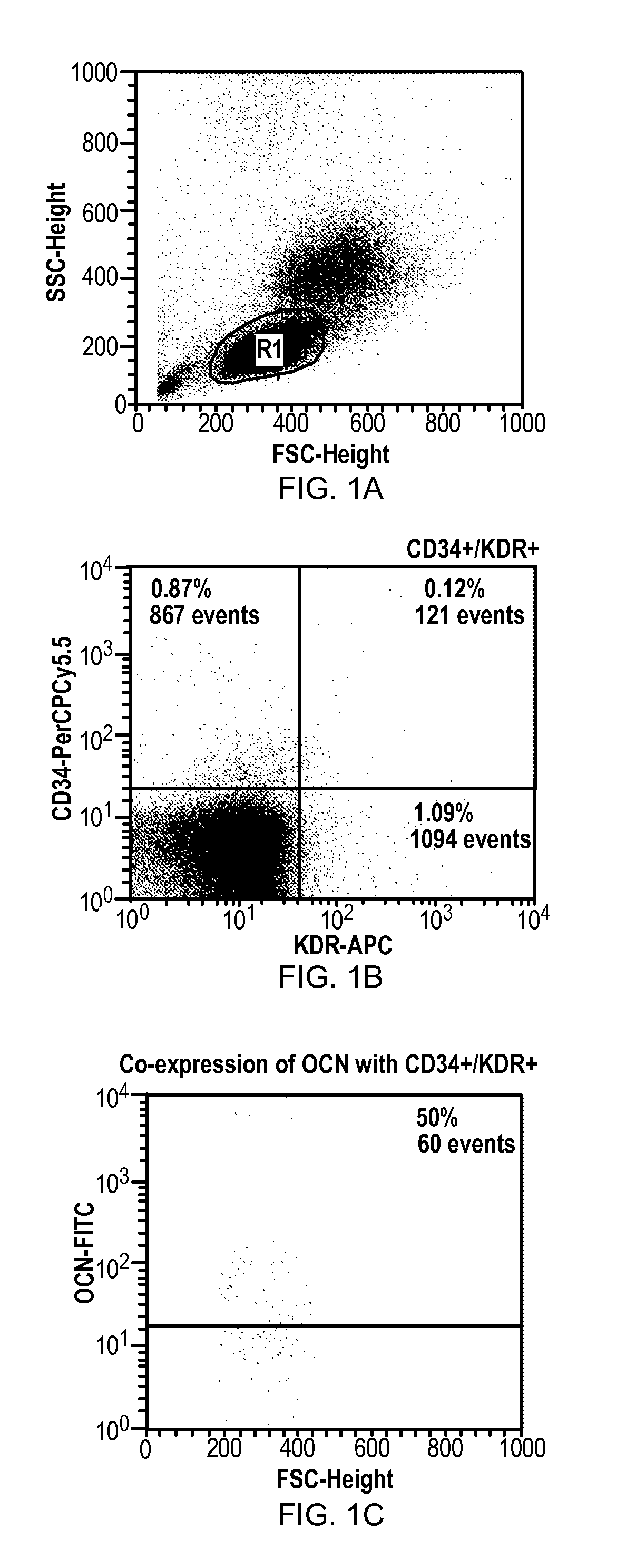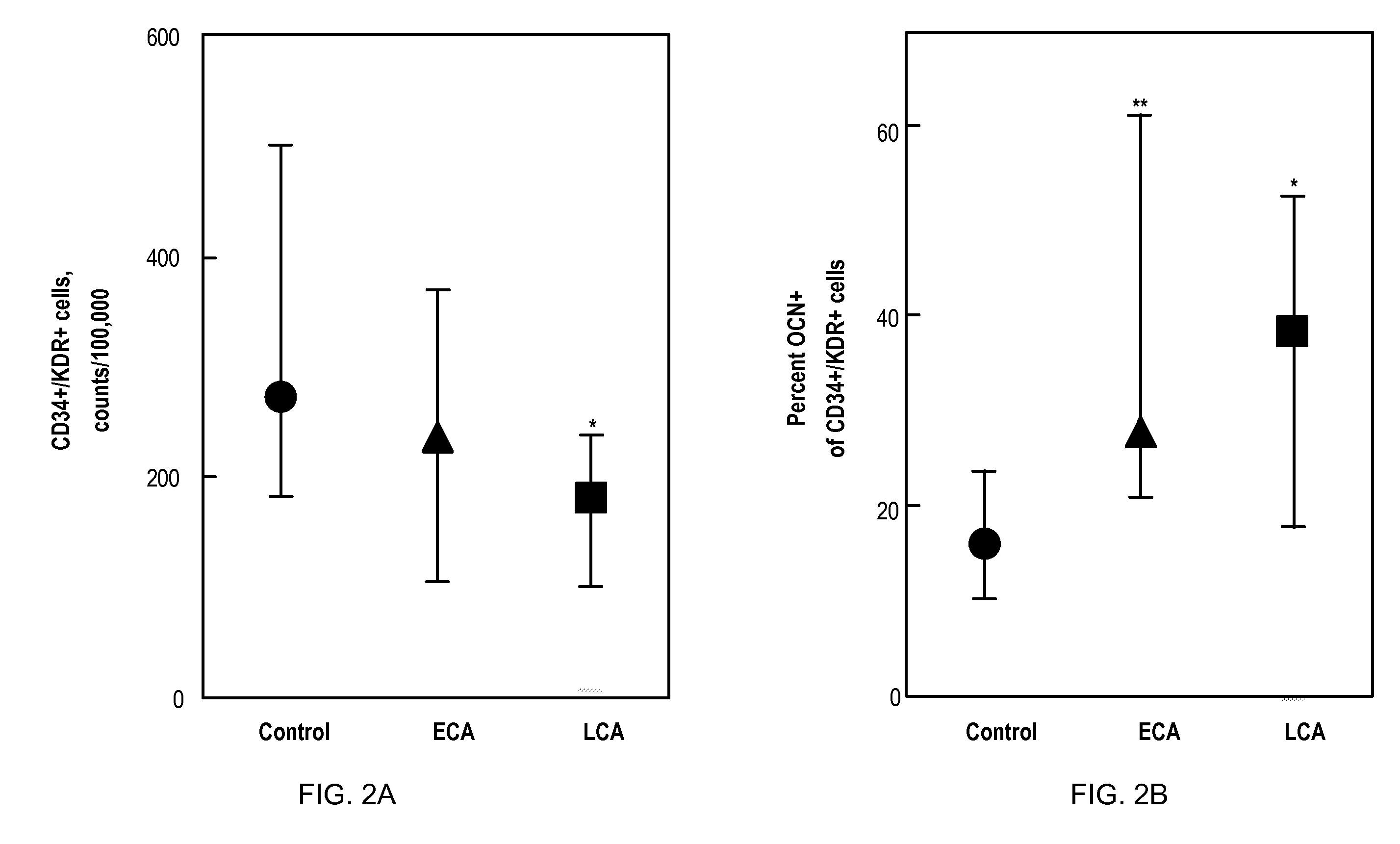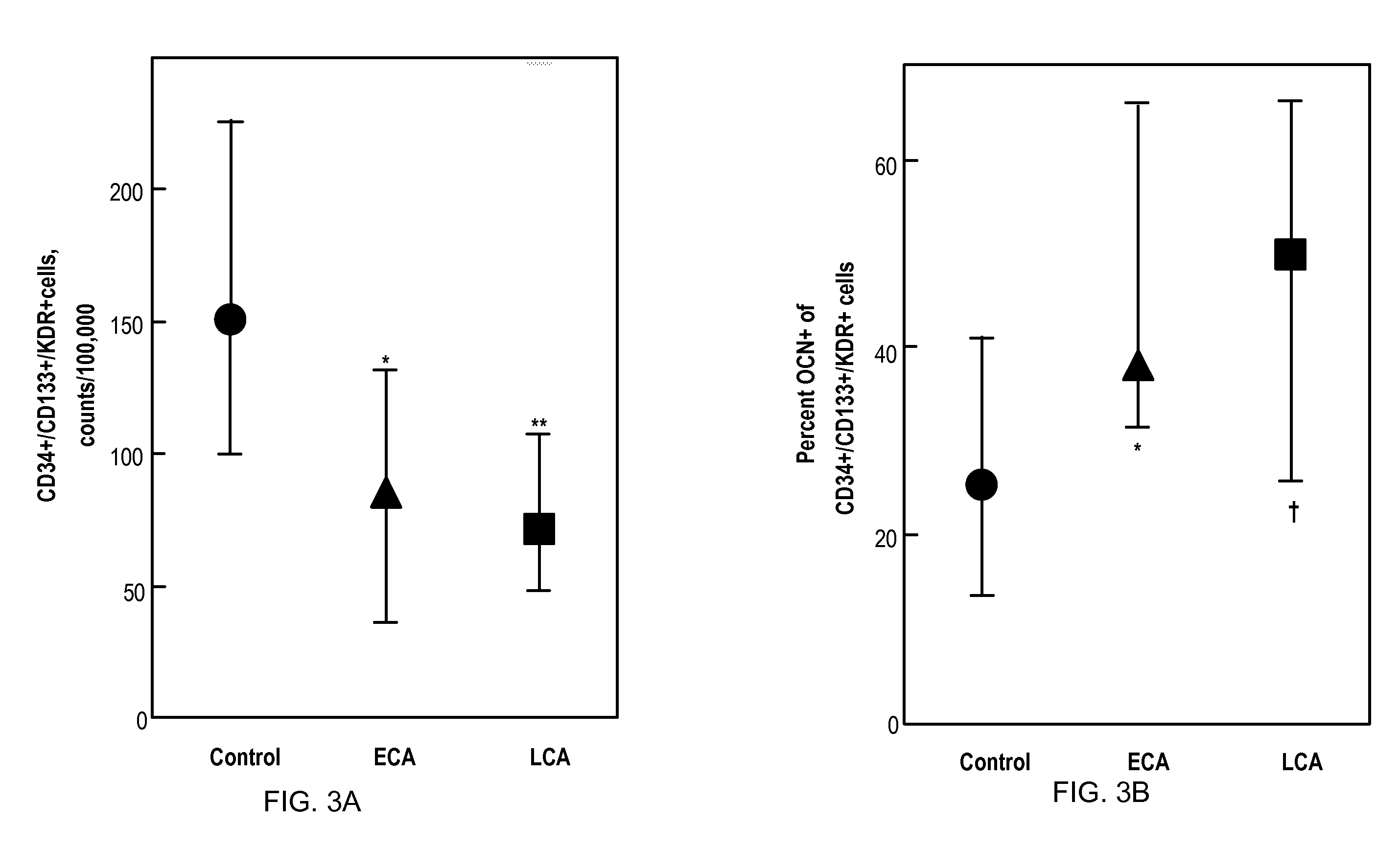Assessing mammals for vascular diseases and valvular diseases
a technology for assessing mammals and valvular diseases, applied in the direction of instruments, biological material analysis, biochemistry apparatus and processes, etc., can solve the problems of reducing the oxygen supply to the heart muscle, angina and heart attack, and weakening the heart muscl
- Summary
- Abstract
- Description
- Claims
- Application Information
AI Technical Summary
Problems solved by technology
Method used
Image
Examples
example 1
Osteocalcin Expression by Circulating Endothelial Progenitor Cells in Patients with Coronary Atherosclerosis
Study Subjects
[0049]An institutional approved study was performed. All study subjects provided written, informed consent. A total of 59 consecutive patients who were undergoing coronary angiography and coronary endothelial function testing, and met the criteria outlined below for inclusion into the three study groups, were recruited. Patients with acute coronary syndromes (unstable angina or acute myocardial infarction), heart failure (ejection fraction50% stenosis in three or more major epicardial arteries), n=29.
Coronary Angiography and Invasive Endothelial Function Testing
[0050]Patients underwent coronary angiography using standard clinical protocols. Arterial blood (20 mL) was drawn from the aortic catheter before cardiac catheterization for flow cytometry and biochemical analyses (see below). After diagnostic angiography, subjects without significant structural coronary l...
example 2
Gradient of EPCs
[0070]In 12 patients with coronary endothelial dysfunction, blood samples were obtained simultaneously from the ostium of the left main coronary artery and the coronary sinus. There were significantly lower percentages of osteogenic EPCs (by (mean±SEM]), 21±7%), particularly in the population containing relatively late EPCs, in the samples obtained from the coronary sinus as compared to the samples that were obtained from the left main coronary artery. These results suggest that there is a consumption of EPCs which are OCN+ across the coronary circulation in patients with early coronary disease.
example 3
Bone-Related Markers
[0071]The following was performed to demonstrate that bone-related polypeptides other than OCN can be used to co-stain EPCs and thus identify patients with vascular disease. The mRNA for alkaline phosphatase (AP) was examined in CD34+ / OCN+ cells versus CD34+ / OCN− cells. The mRNA for AP was below the limit of detection for the assay in the CD34+ / OCN− cells, but easily measurable in the CD34+ / OCN+ cells. Based on the sensitivity of the assay, it was estimated that an approximately 1000-fold enrichment for the AP mRNA in the CD34+ / OCN+ as compared to the CD34+ / OCN− cells. Qualitatively similar results were obtained in two additional samples. These results demonstrate that not just OCN, but other bone related polypeptides (e.g., AP) can be used to co-stain EPCs and thus identify patients with vascular disease.
PUM
| Property | Measurement | Unit |
|---|---|---|
| size | aaaaa | aaaaa |
| confocal microscopy | aaaaa | aaaaa |
| size | aaaaa | aaaaa |
Abstract
Description
Claims
Application Information
 Login to View More
Login to View More - R&D
- Intellectual Property
- Life Sciences
- Materials
- Tech Scout
- Unparalleled Data Quality
- Higher Quality Content
- 60% Fewer Hallucinations
Browse by: Latest US Patents, China's latest patents, Technical Efficacy Thesaurus, Application Domain, Technology Topic, Popular Technical Reports.
© 2025 PatSnap. All rights reserved.Legal|Privacy policy|Modern Slavery Act Transparency Statement|Sitemap|About US| Contact US: help@patsnap.com



